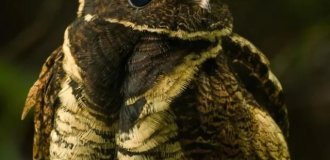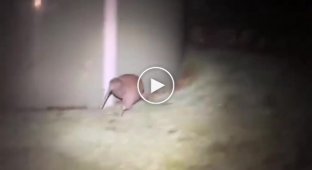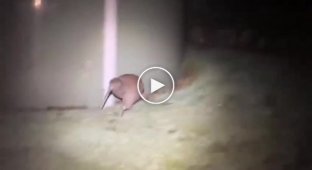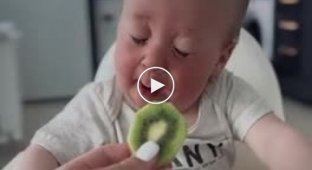Kiwi: degradation on all fronts. Why did these birds decide to “erase” their bodies? (10 photos)
The more you read about kiwis, the more it seems that they are not evolving, but are rolling back in development on all fronts. Once upon a time, their ancestors were the most ordinary birds, graceful and winged, and today they have turned into half-blind potatoes with beaks. 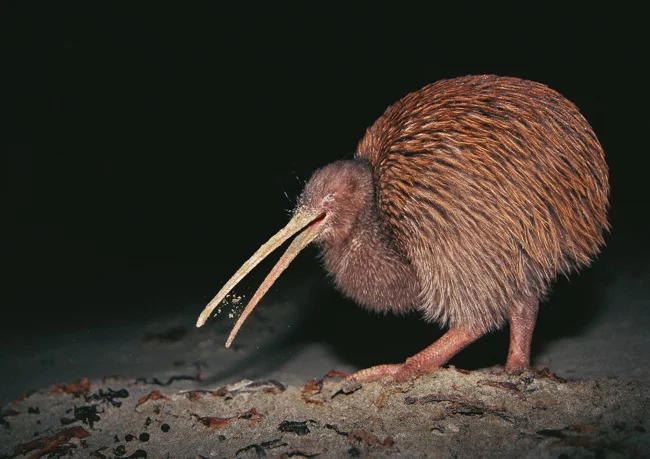
Just look at this impudent fruit!
It used to be that the closest relatives of kiwis were the now extinct moa, whose bones are still found in New Zealand. But today we know that their body structure is much closer to the elephant birds that lived half the world away from here - in Madagascar. The ancestors of the kiwi arrived in New Zealand 30-60 million years ago. And they arrived, moreover, on their own wings. 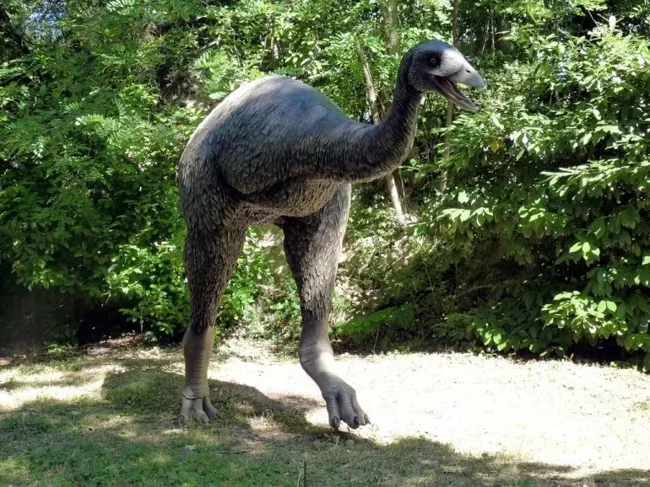
Elephant birds, also known as Aepyornis, are indeed anatomically quite close to the kiwi. But they lost their ability to fly in parallel paths. The last common ancestor of the kiwi and Aepyornis could fly.
Now, millions of years later, only outgrowths less than 5 centimeters long remain of these wings. Kiwis have the smallest wings of any bird, fossil or living. And that's not the only part of their body that has undergone strange changes. Their bones, once light and thin, now resemble the heavy bones of reptiles. Their feathers, which were just as graceful, have degenerated into simple hairs, similar to the fur of mammals. They've even lost their pygostyle (coccyx bone), which is basically a shortened tail! 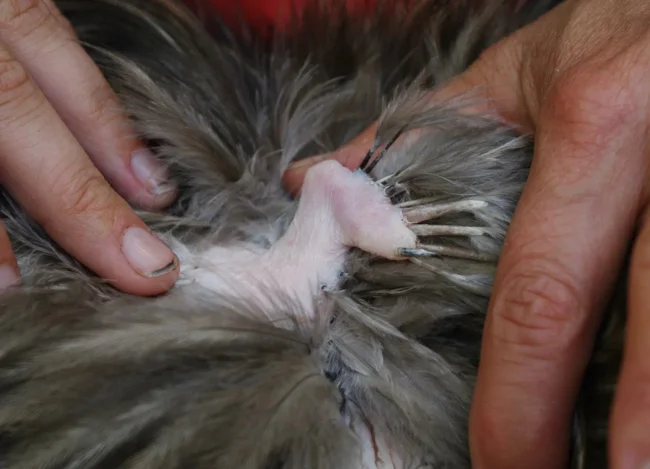
An adult kiwi has a wing smaller than a newborn chick!
The list of numerous kiwi losses would not be complete without a feature that was discovered just a few years ago. In 2017, American scientists studied 160 kiwi chicks and found that 53 of them had eye defects that impair vision or were completely blind. But only physically developed chicks without pronounced pathologies were selected for the study! It seems that in a couple of tens of millions of years, kiwis will finally degrade to the level of fruits. 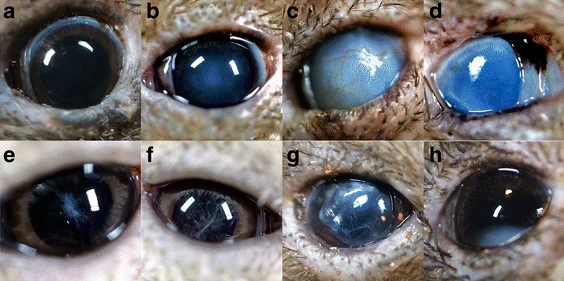
a) Kiwi eye without pathologies b) Kiwi eye with age-related changes c-h) Various pathologies, from fibrosis to cataracts.
But in reality, it's not that bad, evolution has no desire to thoroughly mock the furry birds, it is just a process. And its most important component - natural selection - allows us to reject individuals with broken genes if these mutations reduce the viability of the individual. The paradox of kiwi is that the negative changes described above have virtually no effect on their lives. 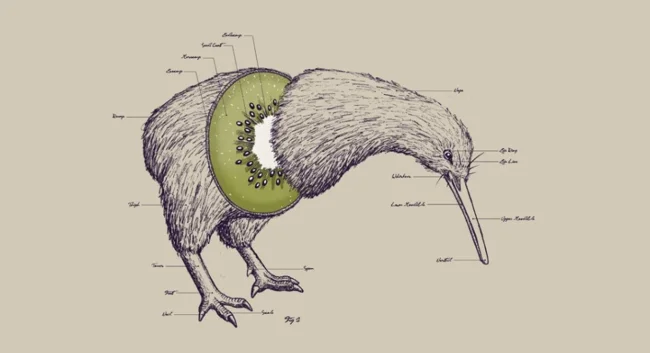
The structure of kiwi in cross-section.
When the ancestors of kiwi moved to New Zealand, they lost the need to fly. Flying is an energy-consuming activity, so no bird will waste energy on it when food is literally lying underfoot and there are no natural enemies. Therefore, mutations that disrupt the normal development of wings did not affect their survival and multiplied in the population until they led to a complete loss of the ability to fly. Absolutely the same story happened with the plumage and pygostyle - the bone structure to which the tail feathers of flying birds are attached. The eyes began to slowly fail when kiwis switched to a nocturnal lifestyle. They sleep during the day, and at night they look for fruits, invertebrates and amphibians in the pitch darkness of the lower tier of tropical forests. Vision is of little use in such conditions; kiwis rely almost exclusively on their sense of smell. But it is already developed simply superbly: the absolute majority of other birds are not fit to hold a candle to kiwis! 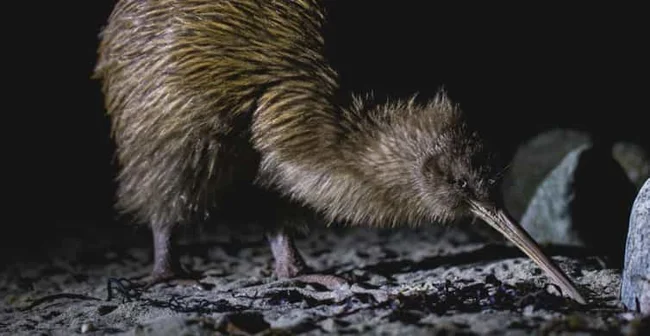
Kiwis have not been studied as well as we would like, largely due to their nocturnal lifestyle.
All other structural features of the kiwi are associated with their specialization for an unusual ecological niche, more typical of small omnivorous mammals. Strong clawed legs, for example, allow them to quickly run after prey, dig holes and defend their territory from other kiwis. And a well-developed syrinx (singing throat) - to scream loudly like a dinosaur, reminding neighbors that this territory is occupied. By the way, they are ready to fight for their land even to the death! Territorial conflicts between two birds rarely lead to bloodshed, but if they do, serious injuries cannot be avoided. In their territory, kiwis not only hunt, but also engage in construction. Each bird has several holes located in secluded places of its possessions. Moreover, these are not just depressions in the ground, but full-fledged underground dwellings, like those of mammals! Kiwi tries not to linger in one dwelling for a long time and generally avoids any contact. 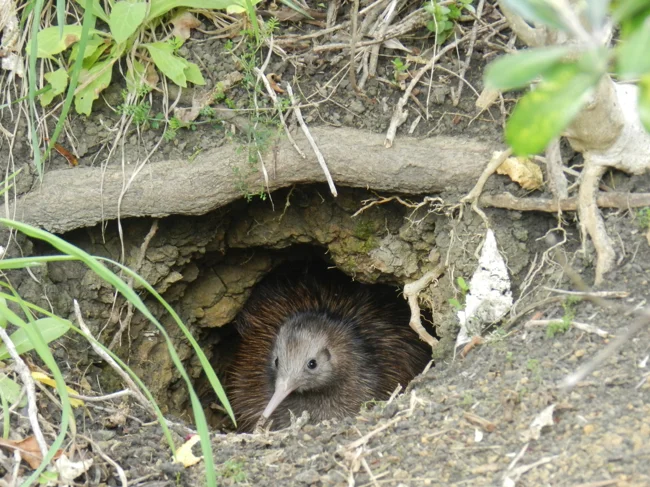
Behold: a kiwi den!
The only exception for the kiwi is its other half. Kiwis are monogamous birds and often share a territory for two. But they respect each other's need for privacy and meet at the common nest only once every few days. And the rest of the time they simply call to each other from a distance. Perhaps it is precisely because of such a careful attitude to personal boundaries that they are able to live together for up to 20 years? 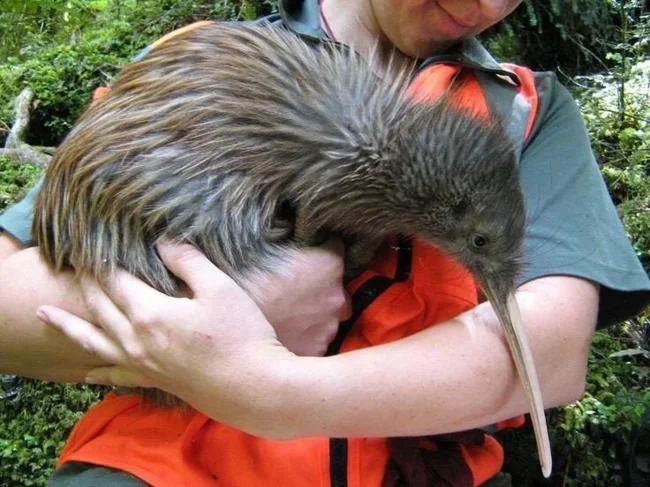
A female big grey kiwi can weigh up to 4 kilograms. This is the maximum weight for a kiwi.
Once a year, the female lays a single egg, which is incubated almost exclusively by the male. Well, the lady has already worked hard enough: she has grown an egg weighing 450 grams! During the formation of the egg, the female is forced to eat three times more than usual. But 2-3 days before laying, she stops eating altogether: the huge egg presses on the stomach and prevents it from digesting food. 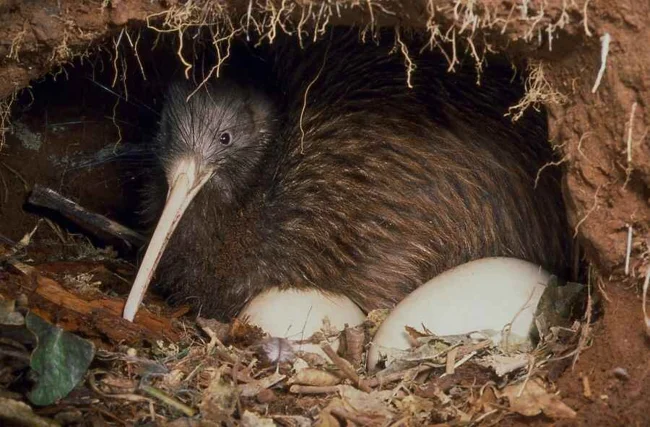
Sometimes a kiwi can lay a second egg 20-30 days after the first. But this is a rare event.
After laying, the egg has to be incubated for 2-3 months. But an active and mobile chick hatches from it, which, in addition, can live exclusively on fat reserves for about 3 weeks. It does not need parental protection and care, it copes on its own! 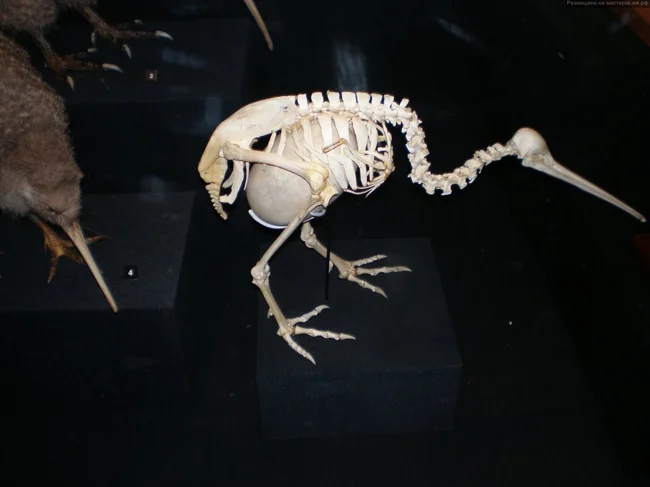
It's scary to even imagine the inconvenience a female kiwi faces while "growing" such an egg.
These are such unusual creatures, these kiwis of ours. The degradation of individual organs is combined in them with unusual adaptations and surprisingly complex behavior. One thing is for sure - they cannot be called primitive!
